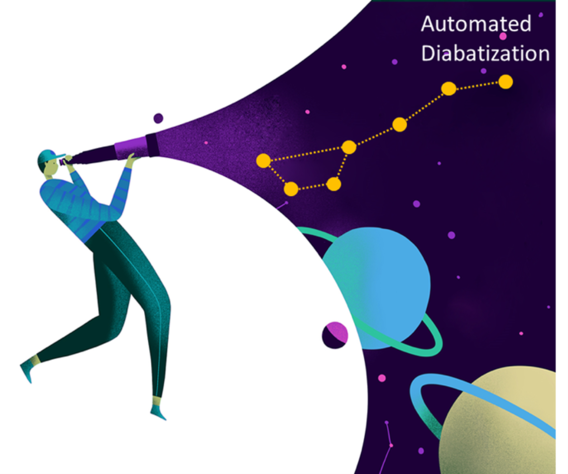Our feature article on diabatic states has now been published:
“Diabatic States of Molecules,” Y. Shu, Z. Varga, S. Kanchanakungwankul, L. Zhang, and D. G. Truhlar, Journal of Physical Chemistry A 126, 992-1018 (2022). doi.org/10.1021/acs.jpca.1c10583
Quantitative simulations of electronically nonadiabatic molecular processes require both accurate dynamics algorithms and accurate electronic structure information. Very often semiclassical nonadiabatic dynamics is performed in a direct way, in which one evaluates the adiabatic potentials, gradients, and couplings from electronic structure at every time step. Direct semiclassical nonadiabatic dynamics is expensive due to the high cost of electronic structure calculations. And hence it is limited to small systems or lower levels of electronic structure methods. In addition, there is an increasing interest in involving nuclear quantum effects. The goals of performing electronically nonadiabatic quantum dynamics with quantitatively accurate electronic structure input and performing electronically nonadiabatic semiclassical dynamics with high levels of theory, long simulation times, and sufficient ensemble averaging have stimulated the development of diabatic representations. Diabatic representations, unlike adiabatic representations, are not unique. But they are very convenient because, in a diabatic representation, the population transfer between electronic states is governed by the diabatic coupling, which – unlike the coupling vector in the adiabatic representation – is a smooth scalar; therefore diabatic potential energy matrices can be fitted to smooth analytic functions. The goal of this article is to review the utility of diabatic representations for dynamics, the characteristics of a diabatic representation, the connections between diabatization methods, and the recent developments of new methods from our group.
